Description
Storage Networking Protocol Fundamentals
A comparative analysis of Ethernet, TCP/IP, and Fibre Channel in the context of SCSI
- Introduces network administrators to the requirements of storage protocols
- Explains the operation of network protocols to storage administrators
- Compares and contrasts the functionality of Ethernet, TCP/IP, and Fibre Channel
- Documents the details of the major protocol suites, explains how they operate, and identifies common misunderstandings
- References the original standards and specifications so you can get a complete understanding of each protocol
- Helps you understand the implications of network design choices
- Discusses advanced network functionality such as QoS, security, management, and protocol analysis
Corporations increasingly depend on computer and communication technologies to remain competitive in the global economy. Customer relationship management, enterprise resource planning, and e-mail are a few of the many applications that generate new data every day. Effectively storing, managing, and accessing that data is a primary business challenge in the information age. Storage networking is a crucial component of the solution to meet that challenge.
Written for both storage administrators who need to learn more about networking and network administrators who need to learn more about storage, Storage Networking Protocol Fundamentals is a concise introduction to storage networking protocols. The book picks up where Storage Networking Fundamentals left off by focusing on the networking protocols that underlie modern open systems: block-oriented storage networks.
The first part of the book introduces you to the field of storage networking and the Open Systems Interconnection (OSI) reference model. The second part compares networked storage technologies, including iSCSI (Small Computer Systems Interface over IP) and Fibre Channel. It also examines in detail each of the major protocol suites layer-by-layer within the OSI reference model. The third part discusses advanced functionalities of these technologies, such as quality of service (QoS), load-balancing functions, security, management, and protocol analysis. You can read this book cover to cover or use it as a reference, directly accessing the particular topics of interest to you.
“Storage networking is a critical concept for today’s businesses, and this book provides a unique and helpful way to better understand it. Storage networking is also continuously evolving, and as such this book may be seen as an introduction to the information technology infrastructures of the future.”
Table of Contents
Part I Storage Networking Landscape
Chapter 1 Overview of Storage Networking
Brief History of Storage
Intelligent Interface Models
Serial Transmission Techniques
Modern Storage Networks
Drivers for Change
What Is a Storage Network?
Block Storage Protocol Review: ATA, SCSI, and SBCCS
ATA
SCSI
SBCCS
Mainframe Storage Networking: ESCON and FICON
ESCON
FICON
File Server Protocol Review: CIFS, NFS, and DAFS
CIFS
NFS
DAFS
Backup Protocols: NDMP and EXTENDED COPY
NDMP
SCSI-3 EXTENDED COPY
Optical Technologies: SONET/SDH, DWDM/CWDM, and RPR/802.17
SONET/SDH
DWDM/CWDM
RPR/802.17
Virtualization Implementations: Host, Storage Subsystem, and Network
Host Implementations
Storage Subsystem Implementations
Network Implementations
Summary
Review Questions
Chapter 2 OSI Reference Model Versus Other Network Models
OSI Reference Model
Network Models, Specifications, and Implementations
Seven-Layer Model
Implementation Considerations
SCSI Bus Interface and the ANSI T10 SCSI-3 Architecture Model
Ethernet and the IEEE 802 Reference Model
TCP/IP Suite and the ARPANET Model
Fibre Channel Architecture and ANSI T11 Model
Fibre Channel Model and the OSI Reference Model
Fibre Channel Specifications
Summary
Review Questions
Chapter 3 Overview of Network Operating Principles
Conceptual Underpinnings
Throughput
Topologies
Service and Device Discovery
SCSI Parallel Interface
The Right Tool for the Job
SPI Throughput
SPI Topologies
SPI Service and Device Discovery
Ethernet
Low Overhead Paradigm
Ethernet Throughput
Ethernet Topologies
Ethernet Service and Device Discovery
TCP/IP Suite
Value of Ubiquitous Connectivity
TCP/IP Throughput
TCP/IP Topologies
TCP/IP Service and Device Discovery
Fibre Channel
Merger of Channels and Packet Switching
FC Throughput
FC Topologies
FC Service and Device Discovery
Summary
Review Questions
Chapter 4 Overview of Modern SCSI Networking Protocols
iSCSI
iSCSI Functional Overview
iSCSI Procedural Overview
FCP
FCP Functional Overview
FCP Procedural Overview
FCIP
FCIP Functional Overview
FCIP Procedural Overview
iFCP
iFCP Functional Overview
iFCP Procedural Overview
Summary
Review Questions
Part II OSI Layers
Chapter 5 OSI Physical and Data-Link Layers
Conceptual Underpinnings
Addressing Schemes
Address Formats
Delivery Mechanisms
Link Aggregation
Transceivers
SCSI Parallel Interface
SPI Media, Connectors, Transceivers, and Operating Ranges
SPI Encoding and Signaling
SPI Addressing Scheme
SPI Name Assignment and Resolution
SPI Address Assignment and Resolution
SPI Media Access
SPI Network Boundaries
SPI Frame Formats
SPI Delivery Mechanisms
SPI Link Aggregation
SPI Link Initialization
Ethernet
Ethernet Media, Connectors, Transceivers, and Operating Ranges
Ethernet Encoding and Signaling
Ethernet Addressing Scheme
Ethernet Name Assignment and Resolution
Ethernet Address Assignment and Resolution
Ethernet Media Access
Ethernet Network Boundaries
Ethernet Frame Formats
Ethernet Delivery Mechanisms
Ethernet Link Aggregation
Ethernet Link Initialization
Fibre Channel
FC Media, Connectors, Transceivers, and Operating Ranges
FC Encoding and Signaling
FC Addressing Scheme
FC Name Assignment and Resolution
FC Address Assignment and Resolution
FC Media Access
FC Network Boundaries
FC Frame Formats
FC Delivery Mechanisms
FC Link Aggregation
FC Link Initialization
Summary
Review Questions
Chapter 6 OSI Network Layer
Internet Protocol
IPv4 Overview
Data-Link Support
Addressing Scheme
Name Assignment and Resolution
Address Assignment and Resolution
Network Boundaries
Packet Formats
Delivery Mechanisms
ICMP
Interface and Port Initialization
Fibre Channel
Summary
Review Questions
Chapter 7 OSI Transport Layer
TCP/IP Suite
UDP
UDP Operational Overview
UDP Packet Formats
UDP Delivery Mechanisms
UDP Connection Initialization
TCP
TCP Operational Overview
TCP Packet Formats
TCP Options
TCP Delivery Mechanisms
TCP Connection Initialization
Fibre Channel
FC Operational Overview
FC Frame Formats
FC Delivery Mechanisms
FC Connection Initialization
Summary
Review Questions
Chapter 8 OSI Session, Presentation, and Application Layers
iSCSI Operational Details
iSCSI Addressing Scheme
iSCSI Name Assignment and Resolution
iSCSI Address Assignment and Resolution
iSCSI Session Types, Phases, and Stages
iSCSI Data Transfer Optimizations
iSCSI PDU Formats
iSCSI Login Parameters
iSCSI Delivery Mechanisms
FCP Operational Details
FCP Addressing Scheme
FCP Name Assignment and Resolution
FCP Address Assignment and Resolution
FCP Session Establishment
FCP Data Transfer Optimizations
FCP IU Formats
FCP Additional Login Parameters
FCP Delivery Mechanisms
FCIP Operational Details
Architecture and Functional Models
FCIP Addressing Scheme
FCIP Packet and Frame Formats
FCIP Session Establishment
FCIP Delivery Mechanisms
FCIP Data Transfer Optimizations
Summary
Review Questions
Part III Advanced Network Functionality
Chapter 9 Flow Control and Quality of Service
Conceptual Underpinnings of Flow Control and Quality of Service
Ethernet Flow Control and QoS
Ethernet Flow Control
Ethernet QoS
IP Flow Control and QoS
IP Flow Control
IP QoS
TCP Flow Control and QoS
TCP Flow Control
TCP QoS
iSCSI Flow Control and QoS
iSCSI Flow Control
iSCSI QoS
FC Flow Control and QoS
FC Flow Control
FC QoS
FCP Flow Control and QoS
FCP Flow Control
FCP QoS
FCIP Flow Control and QoS
FCIP Flow Control
FCIP QoS
Summary
Review Questions
Chapter 10 Routing and Switching Protocols
Conceptual Underpinnings of Routing and Switching Protocols
Ethernet Switching Protocols
IP Routing Protocols
FC Switching Protocols
Summary
Review Questions
Chapter 11 Load Balancing
Conceptual Underpinnings of Load Balancing
Load Balancing with Networking Technologies
Ethernet Load Balancing
IP Load Balancing
FC Load Balancing
Load Balancing with Session-Oriented Technologies
iSCSI Load Balancing
FCP Load Balancing
FCIP Load Balancing
End Node Load-Balancing Techniques
Summary
Review Questions
Chapter 12 Storage Network Security
Conceptual Underpinnings of Storage Network Security
AAA Protocols
Management Protocols
Ethernet Security
IP Security
TCP Security
iSCSI Security
Fibre Channel Security
FCP Security
FCIP Security
Summary
Review Questions
Chapter 13 Storage Management Protocols
Conceptual Underpinnings of Storage Management Protocols
TCP/IP Management
FC Management
SCSI Management
Summary
Review Questions
Chapter 14 Protocol Decoding and Traffic Analysis
The Purpose of Protocol Decoding
Methods of Traffic Capture
Types of Protocol Decoders
Protocol Decoder Screenshots
Purpose of Traffic Analysis
Types of Traffic Analyzers
Summary
Review Questions
Part IV Appendixes
Appendix A Standards and Specifications
Appendix B Acronyms and Abbreviations
Appendix C Answers to Review Questions
Glossary
1587051605TOC042706


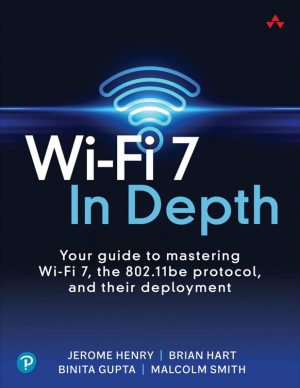

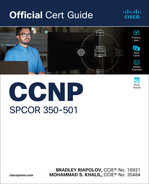


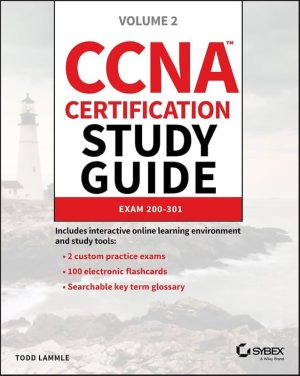

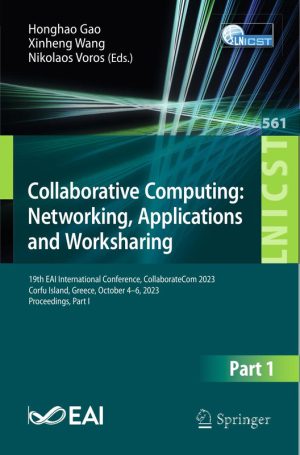


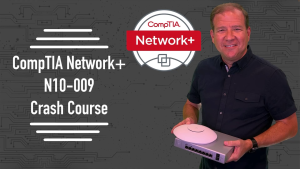





Reviews
There are no reviews yet.